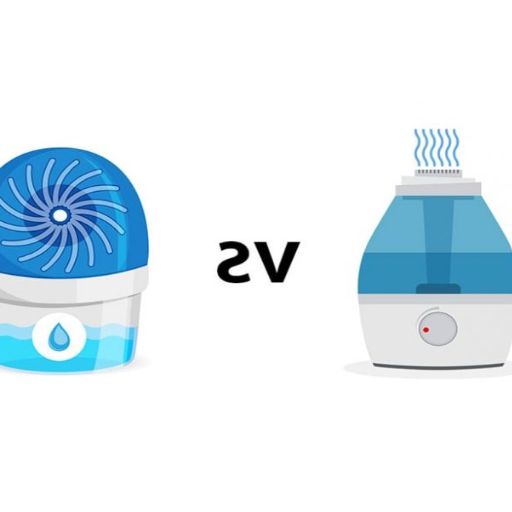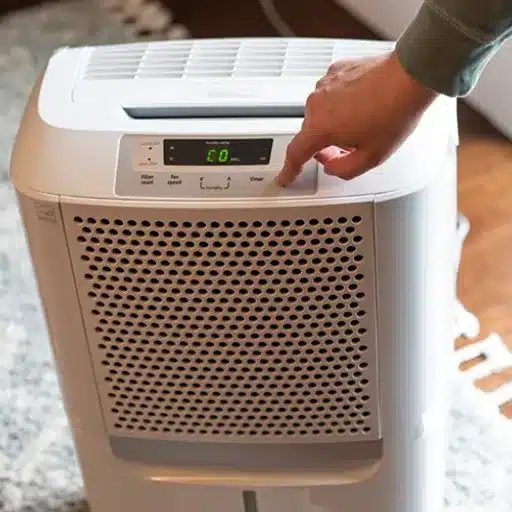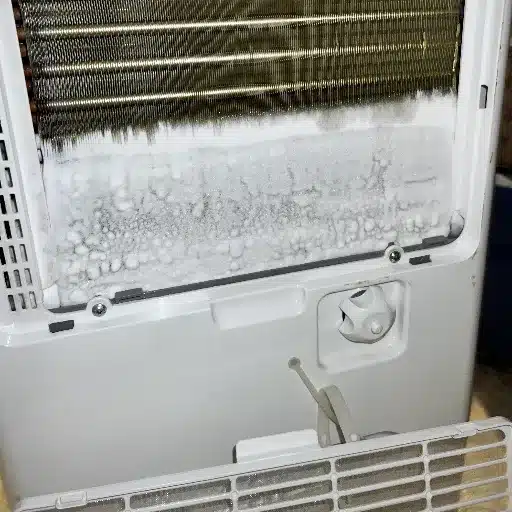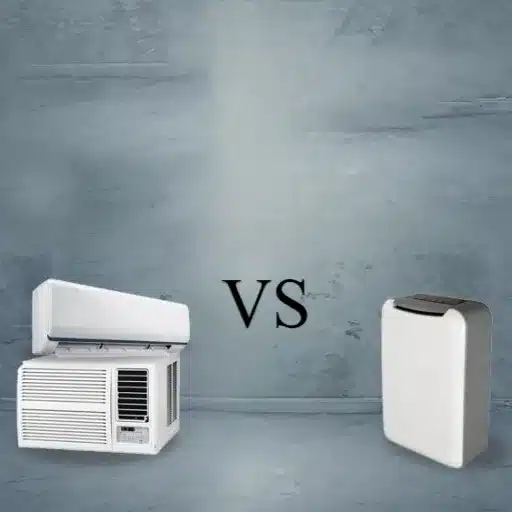When it comes to maintaining a healthy indoor environment, understanding the tools available to improve air quality is crucial. Air purifiers, humidifiers, and dehumidifiers are three popular devices, each with distinct functions and benefits. However, selecting the right one can be challenging, especially if you suffer from allergies or are concerned about maintaining optimal air conditions in your home. This article will break down the core differences between these devices, explain their impacts on air quality, and help you make an informed decision based on your specific needs. Whether you’re looking to reduce allergens, manage humidity, or simply breathe cleaner air, this guide will provide the clarity you need to choose the best solution for your space.
Introduction to Air Purifiers, Humidifiers, and Dehumidifiers
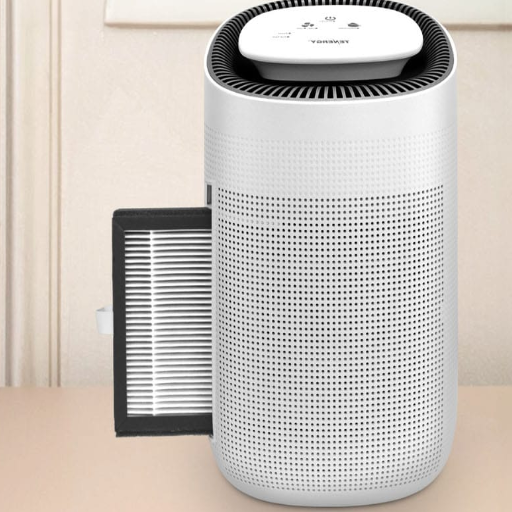
What is an Air Purifier?
An air purifier is generally an apparatus meant to remove contaminants from indoor air, thus improving the air quality. In dirty air indoors, the contaminants can consist of dust, pollen, pet dander, mold spores, bacteria, or viruses in the air. An air purifier thus cleans the air with filtration systems such as HEPA filters, charcoal filters, and ionizers, hence dealing with different kinds of impurities.
Since air purifiers are particularly advanced for those with respiratory ailments, wondering about airborne types of allergens, they capture and keep airborne allergens and irritants indoors to maintain a clean and healthy breathing space; thus, it decreases the symptoms contracted by nasal congestion, sneezing, or asthma attacks. Moreover, modern unifiers can also neutralize smells as well as volatile organic compounds (VOCs) to give an odorless and pleasant atmosphere indoors.
Effectiveness depends on the size of the room, type of filters used, and pollutants under treatment, among other factors. Also, changing filters timely manner and proper maintenance are necessary for top performance. They cannot vacuum all contaminants into the air, but air purifiers do help quite a lot in controlling air quality, more so in urban settings or heavily polluted industrial pockets.
What is a Humidifier?
A Humidifier is a moisturizing device for indoor air, meaning an increase in moisture or humidity is sought, for it is akin to a water vapor or a steam release to counter the dryness in the environment. In the wintertime, heating systems usually further reduce humidity, which is bad for dry skin, irritated sinuses, and other discomforts.
These are some of the kinds of humidifiers: evaporative, ultrasonic, and steam vaporizer. The fan moves air through a moist wick or a filter, after which moisture is dispersed into the air. An ultrasonic humidifier is a mist-generating instrument that uses very high-frequency vibrations, and a steam vaporizer heats water until it boils and turns into steam. Each is unique and serves another need, but all attempt to maintain a healthy indoor humidity level of about 30 to 50 percent.
When used correctly, a humidifier can ease some issues from dry air, such as chapped lips, a sore nose, and irritation. They could also impede the transmission of some airborne viruses that tend to prosper in an environment of low humidity. Ensure that your humidifier is cleaned and maintained; otherwise, you might end up encouraging mold, bacteria, or some other microorganism in your device. Such care assures the effectiveness of the humidifier for safe usage on a daily basis.
What is a Dehumidifier?
The household or industrial apparatus known as a dehumidifier primarily draws excess moisture from the air, thereby causing a reduction in humidity in an interior space. They do best in areas where high humidity causes discomfort to people; hence, it also supports mold formation or causes structural harm. The dehumidifier functions by drawing in air, removing moisture from it, and releasing air drier than before into the room to keep the humidity level within normal conditions of between thirty and fifty percent.
General operation involves a fan drawing in moist air, which is channeled over cooled coils wherein moisture condenses out into water droplets and is collected in a reservoir or drained away through a connected hose. Heated again to a comfortable temperature, the dry air is released back into the space. This continues as long as the dehumidifier is running, thereby regulating the humidity level consistently.
Dehumidifiers are used in places prone to high moisture, such as basements, bathrooms, and laundry areas. They are guards against mold, mildew, and dust mites, all of which flourish in humidity and are likely health hazards responsible for allergies and respiratory problems. Also, by reducing humidity, dehumidifiers protect furniture, electronics, and building materials against excess moisture damage. Therefore, these machines are one conditional factors for promoting a healthy and comfortable environment to have indoors.
Comparative Analysis of Air Purifier, Humidifier, and Dehumidifier
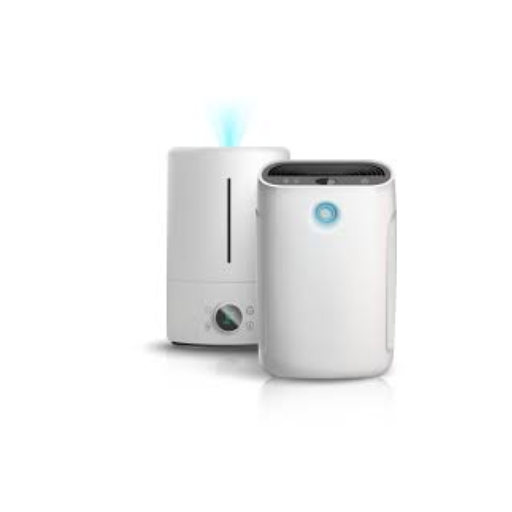
Air Purifier vs Humidifier
There are air cleaners which remove particles from the air; then there are humidifiers which add moisture to counter dryness; finally, dehumidifiers are equipment designed to remove surplus moisture, thereby forestalling mold.
|
Aspect |
Air Purifier |
Humidifier |
Dehumidifier |
|---|---|---|---|
|
Function |
Clean air |
Add moisture |
Reduce humidity |
|
Advantage |
Allergy relief |
Hydrate air |
Mold control |
|
Usage |
Allergies, pets |
Dry seasons |
Humid spaces |
|
Operation |
Filters air |
Emits mist |
Extracts water |
|
Health Aid |
Asthma, allergies |
Dry skin, throat |
Mold prevention |
|
Best Time |
All year |
Winter |
Summer, damp |
|
Location |
Polluted areas |
Heated rooms |
Wet basements |
|
Upkeep |
Replace filter |
Clean tank |
Empty tank |
|
Hybrid |
Available |
Available |
Available |
Air Purifier vs Dehumidifier
The air gets cleaned by the air purifier, eliminating particles from it. The dehumidifier is all about reducing excess moisture, so there is practically no condensation.
|
Aspect |
Air Purifier |
Dehumidifier |
|---|---|---|
|
Function |
Clean air |
Reduce humidity |
|
Advantage |
Allergy relief |
Mold control |
|
Usage |
Allergies, pets |
Humid spaces |
|
Operation |
Filters air |
Extracts water |
|
Health Aid |
Asthma, allergies |
Mold prevention |
|
Best Time |
All year |
Summer, damp |
|
Location |
Polluted areas |
Wet basements |
|
Upkeep |
Replace filter |
Empty tank |
|
Hybrid |
Available |
Available |
Understanding How Each Device Functions
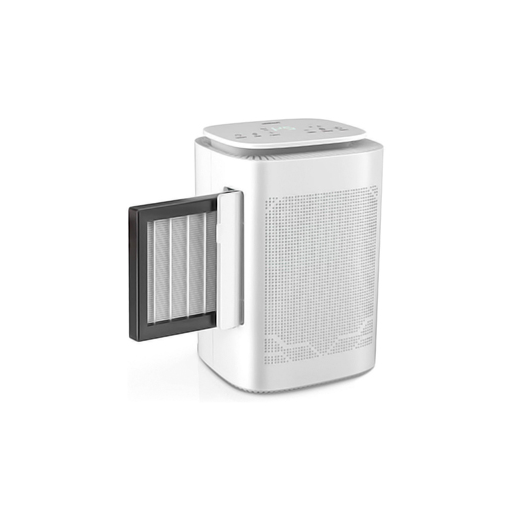
How Air Purifiers Improve Air Quality
Air purifiers are manufactured to improve air quality inside buildings by removing particulate matter, toxins, and allergens using sophisticated filtration techniques. They usually contain High Efficiency Particulate Air (HEPA) filters that can trap at least 99.97% of all particles present in the air whose diameter is 0.3 microns, that is, dust, pollen, pet dander, etc., and particles even smaller, such as smoke or bacteria. Activated carbon filters may also be used to absorb VOCs and odor, providing an enhanced atmospheric environment.
Modern air purifiers also integrate UV-C light or electrostatic precipitators that act against airborne pathogens, viruses, and mold spores. The concept of physical filtration, while actively sterilizing air, is the best way to guarantee air hygiene. The latest in indoor air quality research advances now show how having an air purifier equipped with a sensor that monitors particulate matter (PM2.5 levels) and automatically adjusts settings maintains its optimum working efficiency while consuming the least power.
Interest in hybrid units that perform this task, combined with humidification or dehumidification, is gradually increasing. This enables precise control of air quality and humidity level depending on various climatic conditions and specific health requirements. Regular maintenance on the air purifier is also vital for it to operate efficiently throughout its lifetime, which commonly involves changing the filters periodically and cleaning the unit.
How Humidifiers Help with Dry Air
Humidity levels influence the quality of air and comfort indoors, especially in those areas or seasons where the air is naturally dry. Humidifiers have been designed to add moisture-dependent factors into the air, thereby raising the relative humidity to an optimum range of about 30-50%. The very presence of humidity eliminates or greatly reduces troubles caused by dryness, such as auras of the respiratory tract, dry skin, and irritation of mucous membranes. Increased humidity can also aid the maintenance of wood furniture and flooring, which may experience cracking or take up a heightened state of warp when the air is too dry.
Modern humidifiers work on several technological means-various of which include ultrasonic vibrations, evaporative action, or simply generating steam to disperse water vapor efficiently. Ultrasonic humidifiers stand out for their quiet functioning and for generating very fine mist, while evaporative ones have fans that spread moisture, interspersed with natural downward limitation of humidity levels, thus restricting over-humidification. These would always be very beneficial in cold fronts or during the onset of winter when indoor heating really brings down the relative humidity.
According to recent studies, maintaining the ambient humidity in the recommended range curtails the propagation of some airborne viruses and bacteria toward healthier living environments. Therein arises the risk of microbial growth with improper use and without regular cleaning procedures, followed by harmful particle dispersion, so conscientious maintenance becomes an emergency. Modern units come with antibacterial water tanks, integrated hygrometers, and automatic controls to assure safe humidity levels and comfortable usage.
How Dehumidifiers Control Excess Humidity
Dehumidifiers act to eliminate the moisture from the air to keep humidity levels within an optimum range. First, the moist air is pulled into the unit through an intake vent, where water vapor is condensed into liquid by passing over a refrigerated coil further collected into some kind of tank or drained away using a hose. Once the air has entered the dry stage, it is reheated and blown into the room. Maintaining such a continuous cycle preserves the moisture level in the best range, usually considered to be between 30% and 50% in most living and working places. Excess moisture buildup creates mold and mildew and spoils air quality, and the good thing about dehumidifiers is that they help prevent the growth of mold and mildew while improving air quality and extending the warranty of furniture and building materials.
Many types of dehumidifiers address different needs. Still, the most common varieties are refrigerant and desiccant dehumidifiers. Refrigerators are best at working under warm, humid conditions and in most homes. These units, therefore, are particularly useful at melting down moisture using the cooling cycle at ambient temperatures above about 60°F (16°C). Desiccant dehumidifiers use moisturizers to absorb water vapor and perform better in somewhat cold environments or for niche applications (like industrial settings). Because they work well at those low-temperature levels without risking the coil freezing, these are a viable favorite.
Beyond basic functionality, new-age dehumidifiers also come equipped with smart technologies: integrated sensors and Wi-Fi enable very accurate control and monitoring. Integrated hygrometers measure humidity and adjust accordingly, thereby ensuring that the dehumidifier operates efficiently without wasting energy. Some models feature HEPA filters to capture allergens and airborne particles, thus doubling as an air purifier. According to recent reports, Energy Star and other certification-qualified models promise up to a 30% reduction of energy use compared to non-certified counterparts. Such advancements have made dehumidifiers indispensable in the maintenance of a healthy indoor environment in combating structural and health threats coming from overpowering moisture.
Use Cases for Each Device
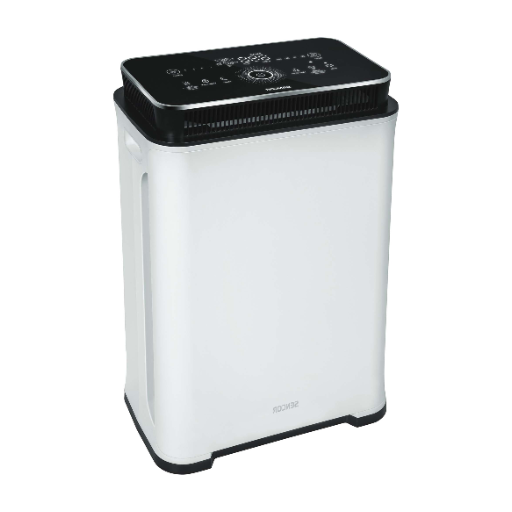
When to Use an Air Purifier for Allergies
Air purifiers are imperative in allergen control, thereby being crucial to those susceptible to allergic reactions. They filter such particulates as pollen, dust mites, pet dander, mold spores, and other allergens commonly found indoors. It is best to run an air purifier when pollen counts are high in spring and fall, or when windows and doors are frequently opened, letting in outdoor irritants. Placing air purifiers in common high-traffic areas such as bedrooms or living spaces will provide relief right where people spend the most time. Additionally, HEPA (high-efficiency particulate absorbent) air purifiers provide the highest degree of relief, removing up to 99.97% of particles from 0.3 microns in size.
One could, however, achieve the best results by running the air purifier all day if specific allergens are concerned, like pet dander or dust from warehouses. Respiratory problems such as asthma and allergic rhinitis have been linked with constant allergen load, implying air should always be clean. Contemporary air purifiers with the latest features, such as air quality sensors and auto-mode adjustments, will make managing allergens easy by increasing filtration levels during higher modes of allergen loads. Combined with regular cleaning practices such as vacuuming with a HEPA-equipped vacuum cleaner and washing of bed linens in hot water, the air purifier will make a big dent in minimizing exposure to indoor allergens.
It is equally vital to appreciate the secondary benefits air purifiers offer in reducing exposure to such chemicals as VOCs and other irritants coming from household products, as allergies are more often aggravated by these chemicals, making an air purifier a double treatment for allergen particles and bad organic pollutants. The latest generation of air purifiers also provides UV light sterilization features to disinfect airborne microorganisms, thus holding a further layer of defense for people who suffer from allergies. With respiratory allergies on an upward trend, air purifier installation in the home will support healing or perhaps improve indoor air quality as a preventive measure for those yet to develop symptoms.
When to Use a Humidifier
A humidifier maintains the optimal balance of indoor humidity and is more popularly used in areas or seasons where the air tends to be overly dry. Dry air can cause several adverse things with regard to health and affect the interiors of a place. When relative humidity in a home or an office falls below 30-50%, some problems crop up, such as dry skin, nasal irritation, respiratory issues, and can even aggravate symptoms of those already suffering from asthma or allergies. A humidifier would impart moisture into the air and balance out the humidity.
Humidifiers should be especially used during the cold season when central heating is typically in operation. The process of heating strips moisture from the air, often leaving the relative humidity at a level far below that considered comfortable or healthy. Dry conditions can worsen winter maladies such as influenza and the common cold; dry air can make nasal passages dry, which leaves the nose less able to filter airborne pathogens. Another good thing that can help ease dry throats, chapped lips, and scratchy eyes-a humidifier-will come in handy during the winter months.
Besides the obvious health perks that a humidifier offers, it also protects household items and structures from being damaged by dry air. Low humidity can cause wooden furniture and floors to crack, warp, and accelerate the deterioration of books, paintings, and other delicate items. By maintaining proper humidity, a humidifier supports the longevity of these items. Picking an ideal humidifier, ultrasonic, evaporative, or steam will depend on the size of the area and the particular requirements of the end-user to ensure that it is working to full effect.
When to Use a Dehumidifier to Prevent Mold Growth
In conditions of an RH above 60%, mold growth would be favored, while maintaining proper indoor humidity is key to keeping it suppressed. This increases practical application for dehumidifiers, particularly in spaces like basements, kitchens, bathrooms, and laundry rooms, as several factors contribute to elevated humidity levels due to water presence or lack of ventilation. And with a hygrometer in hand, one can check if humidity levels warrant the use of a dehumidifier. Experts recommend that indoor humidity levels should be maintained from 30%-50% to balance mold inhibition and space dryness.
Dehumidifiers are most useful in the humidity-prone wet seasons, spring, and summer, when outdoor air humidity stands at a maximum and precipitation or temperature accentuate indoor dampness. On the other hand, homes found in regions with high humidity throughout the year, such as coastal or tropical zones, can immensely benefit from dehumidifiers. The prevention of mold growth and moisture accumulation is best carried out by the installation of dehumidifiers near known trouble spots, such as water leaks in crawl spaces or condensation-prone areas. For an even deeper level of moisture management, state-of-the-art dehumidifiers, equipped with hygrometers and auto-humidity control, may evaluate their environment and operate accordingly.
The removal of excess moisture with mold creation prevention measures goes a long way in protecting against health hazards brought about by mold spore-related respiratory problems and allergies. The moisture, which is kept unchecked, is quite destructive to buildings; in extreme cases, uncomfortably damp air will destroy the materials with which the building is constructed. Slowly but surely, prolonged high humidity levels would also favor pest incursion and rot. Choosing the best dehumidifier model entails considering room size, water removal capacity (in pints per day), and energy efficiency to efficiently and long-term control moisture in your living or working area.
Benefits and Limitations of Each Device
Advantages of Air Purifiers
- Improved Indoor Air Quality: Air purifiers remove airborne pollutants, such as allergens, dust, or any pollutants less than 0.3 microns. HEPA filters in many high-end air purifiers capture 99.97%of these fine particles, thereby greatly increasing air quality, especially in urban settings or places with pollution.
- Reduction of Allergies and Asthma Symptoms: By pulling out typical allergens, including pollen, pet dander, and mold spores, air purifiers help lessen or eliminate triggers for allergies and asthma. People who have used air purifiers inside their houses have received evidence showing that their respiratory well-being has been positively affected, with sensitive groups reporting fewer symptoms of wheezing or nasal congestion.
- Neutralizing Aromas: The Activated carbon filter of many air purifiers will soak up odor-causing particles from cooking, smoking, and pet waste. Aside from air freshness, these carbon filters give way to an odor-free indoor environment, thereby enhancing comfort and cleanliness.
- Reduction in Airborne Diseases: These sanitizing air purifiers use UV-light or antimicrobial technology to neutralize airborne bacteria and viruses; quite beneficial in shared living or office spaces, giving an extra layer of health protection during the flu season.
- Longer Equipment and Furniture Life: By partly neutralizing airborne pollutants in the form of dust and smoke particles, air purifiers minimize the deposition of these particulates on the HVAC systems and surfaces, which lessens wear and tear of the machinery and prevents furniture discoloration, thereby keeping the household or workplace assets in good shape for a longer period.
Advantages of Humidifiers
- Respiratory Health Benefits: Humidifiers may provide enough moisture in the air to keep an optimal humidity between 30-50% in a room. This can give relief from respiratory problems, such as chills of the sinuses, sore throat, or congestion, especially in allergic and asthmatic persons. Studies state that maintaining higher humidity can reduce viral survival time in the air by 70%, thereby restricting the spread of influenza or other such diseases.
- Enhanced Skin Moisturization: Dry indoor air complicates moisture loss from the skin, followed by dryness, flaking, and irritation. Humidifiers retain sufficient humidity so that skin remains moist, and hence prevent common ailments like an outbreak of eczema or drying of lips.
- Protection of Wooden Furniture and Instruments: Wood shrinks, cracks, and warps when the air is too dry. A humidifier maintains moist air to ensure that wooden furniture, flooring, or musical instruments such as pianos or violins last a little longer.
- Better Sleep Quality: Low humidity levels in sleeping conditions can cause discomfort as they dry out nasal passages or create buzzing airways due to irritation, causing one to snore. Humidifiers help moisten the airways, therefore allowing for a more comfortable sleep and less disruption.
- Static Electricity Reduction: Dry air equals static electricity buildup within a closed environment. With the humidifier increasing moisture levels in the air, incidents of static shock are reduced, thus ensuring a safer and more comfortable environment, particularly in homes dotted with numerous electronics.
Advantages of Dehumidifiers
- Control of Excess Moisture: Dehumidifiers reduce moisture in the air present indoors, keeping humidity levels from rising above the optimal range (usually about 30-50%). Increased humidity levels promote the development of mold, mildew, and dust mites, all of which can cause respiratory problems and allergic reactions. Having the right humidity in the living environment provides a healthy setting via dehumidifiers.
- Protection Against Structural Damage: After being elevated for long periods, humidity damages structures, such as those that occur in basements, attics, or unventilated areas. The wood may swell and warp or rot, while those metal parts undergo corrosion. Using a dehumidifier aids in protecting building materials by minimizing condensation and dampness.
- Improved HVAC Efficiency: Depending on humidity, causing a wet feeling inside, HVAC systems work extra hard to cool down the interiors. The dehumidifiers help in thermal comfort, reducing energy consumption, and hence improving and extending the working life of air conditioners. It’s a saving!
- Better Air Quality: By lowering humidity, dehumidifiers limit airborne allergens, such as mold spores and bacteria, which flourish in wetness. This results in mold and pollen-free air quality inside for occupants, especially asthmatics or allergy sufferers.
- Prevention of Odors: High humidity sometimes causes an unpleasant, musty smell due to mold and mildew. Dehumidifiers get rid of these smells by eliminating moisture that clogs the mold and mildew, along with the musty odor.
- Limit the Risks of Pest Infestation: Several pests, such as cockroaches, silverfish, and centipedes, flourish in damp conditions. By maintaining the right humidity, dehumidifiers create an unwelcome environment for such pests, thus protecting homes and buildings.
Together with their dual functionalities, dehumidifiers and humidifiers guarantee all-encompassing surmounting of indoor air quality and environmental comfort.
References
-
Renewable and Rechargeable Powered Air Purifier and Humidifier: A Review
This academic paper discusses the functionalities and technologies behind air purifiers and humidifiers, including humidification-dehumidification systems. -
Team 510: Indoor Air Quality
This document explores various devices like air purifiers, dehumidifiers, and air filters, focusing on their role in improving indoor air quality. -
A Bionic-Based Multi-Objective Optimization for a Compact HVAC System
This research article examines integrated systems for air conditioning, purification, and humidification, including liquid dehumidification and humidification technologies.
Frequently Asked Questions (FAQ)
Q: What is the main difference between an air purifier, a humidifier, and a dehumidifier?
A: The primary difference lies in their functions. An air purifier filters airborne contaminants, improving air quality by removing pollutants like dust, allergens, and smoke. A humidifier adds moisture to the air in your home, helping to prevent dry skin and respiratory issues. In contrast, a dehumidifier removes excess moisture from the air, which can alleviate problems like mold growth and musty odors.
Q: How do air purifiers work to improve indoor air quality?
A: Air purifiers work by using filters to capture and eliminate airborne contaminants. Most air purifiers filter air through HEPA filters, which effectively trap allergens and pollutants, resulting in cleaner air. By reducing allergens and irritants, air purifiers can help alleviate allergy symptoms and improve overall health.
Q: When should I use a humidifier in my home?
A: A humidifier is beneficial during dry seasons or in arid climates when the humidity in your home drops significantly. Adding moisture to the air can help relieve dry skin, throat irritation, and respiratory discomfort. It’s particularly useful for individuals with allergy and asthma symptoms, as it can create a more comfortable living environment.
Q: How do dehumidifiers help prevent mold growth?
A: Dehumidifiers remove excess moisture from the air, creating an environment less conducive to mold growth. By maintaining optimal humidity levels, typically between 30-50%, dehumidifiers help prevent the conditions that lead to mold and mildew, protecting your home and health.
Q: Can I use an air purifier and a dehumidifier together?
A: Yes, using an air purifier and a dehumidifier together can enhance the quality of air in your home. While the air purifier filters airborne contaminants, the dehumidifier reduces moisture levels, creating a healthier and more comfortable living environment. This combination is particularly beneficial for individuals with respiratory conditions.
Q: What types of air purifiers are available on the market?
A: There are various types of air purifiers, including HEPA air purifiers, activated carbon air purifiers, and UV air purifiers. HEPA air purifiers are known for their effectiveness in capturing allergens and pollutants, while activated carbon models target odors and chemicals. UV purifiers use ultraviolet light to kill airborne bacteria and viruses, providing additional protection against health threats.
Q: How do I know if I need a dehumidifier or a humidifier?
A: If your home feels damp, you notice condensation on windows, or you experience mold growth, a dehumidifier is likely necessary to remove excess moisture. Conversely, if your air feels dry, causing irritation or discomfort, a humidifier would be beneficial to add moisture to the air. Assessing your home’s humidity levels can help you decide which device to use.
Q: What are the health benefits of using an air purifier?
A: Using an air purifier can significantly improve indoor air quality by reducing airborne pollutants and allergens. This can lead to fewer allergy symptoms, less eye irritation, and a decreased risk of respiratory conditions. Cleaner air contributes to a healthier living environment, promoting overall well-being.

